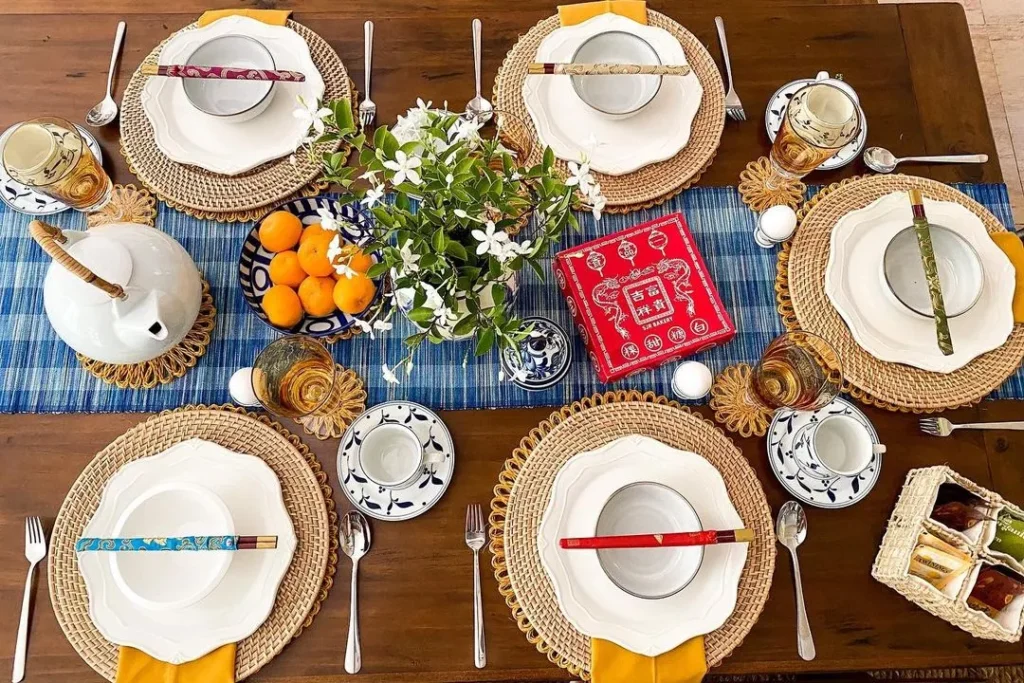When it comes to hosting a dinner party or inviting guests over for a special meal, setting the perfect table is an essential element of forming a memorable and satisfying dining experience. Proper tableware or dishware etiquette not only adds an elegant touch to your gathering but also ensures that your guests feel comfortable and appreciated. This article will delve into the art of setting the perfect table for guests, from choosing the right dishware to arranging it with finesse.
Table of Contents
Choosing the Right Dishware
1. Dinnerware: Plates and Bowls
Main Plates: Start with the main plates. Choose plates that suit the occasion – traditional ceramic plates for formal dinners and stylish stoneware or porcelain for more casual gatherings.
Salad Plates: If you plan to serve a salad course, place smaller salad plates on top of the main plates.
Soup Bowls: For soup courses, select elegant soup bowls that complement your dinnerware.
2. Glassware: Stemware and Tumblers
Wine Glasses: Offer tableware like wine glasses that are appropriate for the type of wine you’ll be serving. Red wine glasses have a bigger bowl, while white wine glasses have a smaller, narrower shape.
Water Glasses: Place water glasses on the table. They should be smaller than wine glasses and typically have a simpler design.
3. Flatware: Forks, Knives, and Spoons
Placement: Arrange flatware systematically. Place forks on the left side, knives on the right, and spoons on the right of the knives.
Specialty Cutlery: If you’re serving specific courses that require specialty cutlery, such as seafood forks or steak knives, add them as needed.
4. Napkins: Cloth or Paper
Cloth Napkins: Cloth napkins lend an air of sophistication to your table setting. Fold them neatly, or use napkin rings for a polished look.
Paper Napkins: If you opt for paper napkins, choose high-quality, decorative ones that complement your table’s theme.
5. Placemats and Tablecloths
Placemats: Placemats protect your table and add a pop of colour or texture. Coordinate them with your dinnerware and decor.
Tablecloths: For formal occasions, a crisp tablecloth can elevate the setting. Ensure it drapes evenly and doesn’t hang too low.
Arranging the Table
1. Table Setting Placement
Basic Setting: A basic table setting includes a main plate, fork, knife, spoon, and a water glass. It’s ideal for casual gatherings.
Informal Setting: For more formal occasions, add salad plates, wine glasses, and additional cutlery as needed.
Formal Setting: In a formal setting, include all necessary cutlery and glassware for multiple courses, along with bread and butter plates, dessert forks, and coffee cups and saucers.
2. Proper Placement
Flatware: Utensils should be arranged in the order they will be used, moving from the exterior. For instance, the salad fork is placed to the left of the main fork, as salads are usually served before the main course.
Glasses: Wine glasses should be placed to the right of the flatware, with water glasses directly above the knife.
3. Centrepiece and Decor
Centrepiece: Choose a centrepiece that complements the occasion and doesn’t obstruct the view across the table. Fresh flowers, candles, or decorative arrangements can work beautifully.
Decorative Details: Consider adding small decorative elements, such as place cards, to personalise each setting and make guests feel welcome.
4. Spacing and Symmetry
Even Spacing: Ensure that there is equal spacing between each place setting and that everything is aligned symmetrically.
Comfortable Distance: Place settings should be spaced at a comfortable distance to allow guests to dine comfortably without feeling crowded.
5. Final Touches
Check Alignment: Before guests arrive, double-check that all items are properly aligned and that the table looks inviting.
Ambience: Adjust lighting to create a warm and inviting ambience, whether through candles, dimmer switches, or natural light.
Conclusion
Setting the perfect table for guests is not just about aesthetics; it’s a gesture that conveys thoughtfulness and hospitality. It establishes a delightful dining atmosphere and enhances meal enjoyment. So, take the time to master the art of dishware etiquette, and your gatherings will be even more enjoyable and refined.

